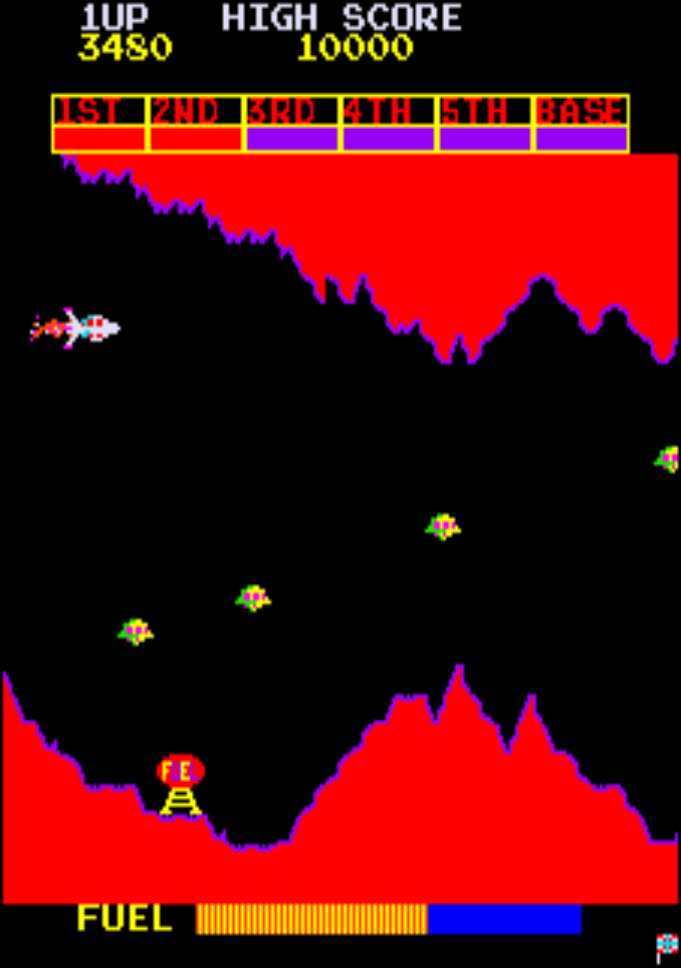Scramble
Screwball.
Playing Scramble takes me back to my early teens, and a small chip shop in a seaside town in West Wales where I grew up. On pressing the Player 1 button and hearing the "here we go" jingle, I swear I can smell vinegar in the air and hear seagulls calling in the background.
The café had previously used a series of upright cabinets that had proved extremely popular. For Scramble they sourced the Stern Cocktail version complete with smoked glass, two player controls and fantastic graphical underlay. A cabinet design I instantly fell in love with.
The game itself is a simple affair. Guide your ship through 6 scrolling levels of mountainous terrain, asteroid fields and narrow winding passages with the intent of destroying the enemy base in the last scene. Your jet ship has two sources of ammunition: forward shooting laser cannon and bombs that arc towards the enemies below. A limited fuel supply has to be replenished by destroying oil wells liberally placed throughout the terrain. Destroy the base and it's back to Level 1 to repeat the challenge.

Scramble's simple mechanics appeal to all ages. Navigation of the initial levels proves straightforward, allowing all who play the game to progress just far enough to ensure one more go. The challenge increases somewhat when entering the passage levels, where forward planning is a necessity and a lapse of concentration can often see the destruction of another ship. The end level base also proves rather difficult to destroy on a first pass, often frustrating players looking for a hard earned reward.
The brightly coloured graphics of Scramble are symptomatic of early 1980's game design, and were used to great effect in luring the coin-heavy punters. The scrolling landscape and 8-way joystick control, accompanied by various upright and cocktail cabinet designs adorned with space-themed artwork ensured Scramble's success in the arcade, clubs and café's all over Europe.
